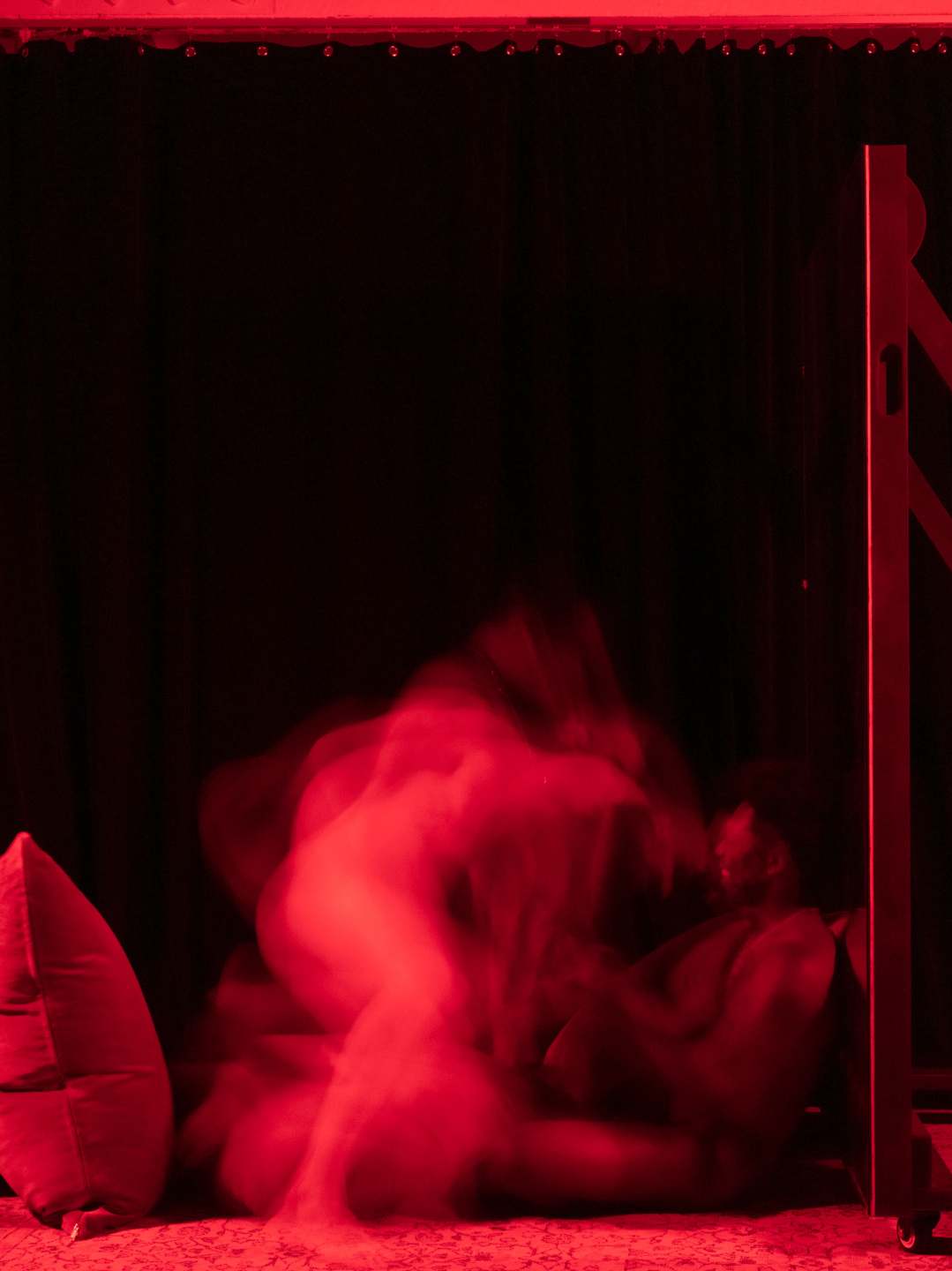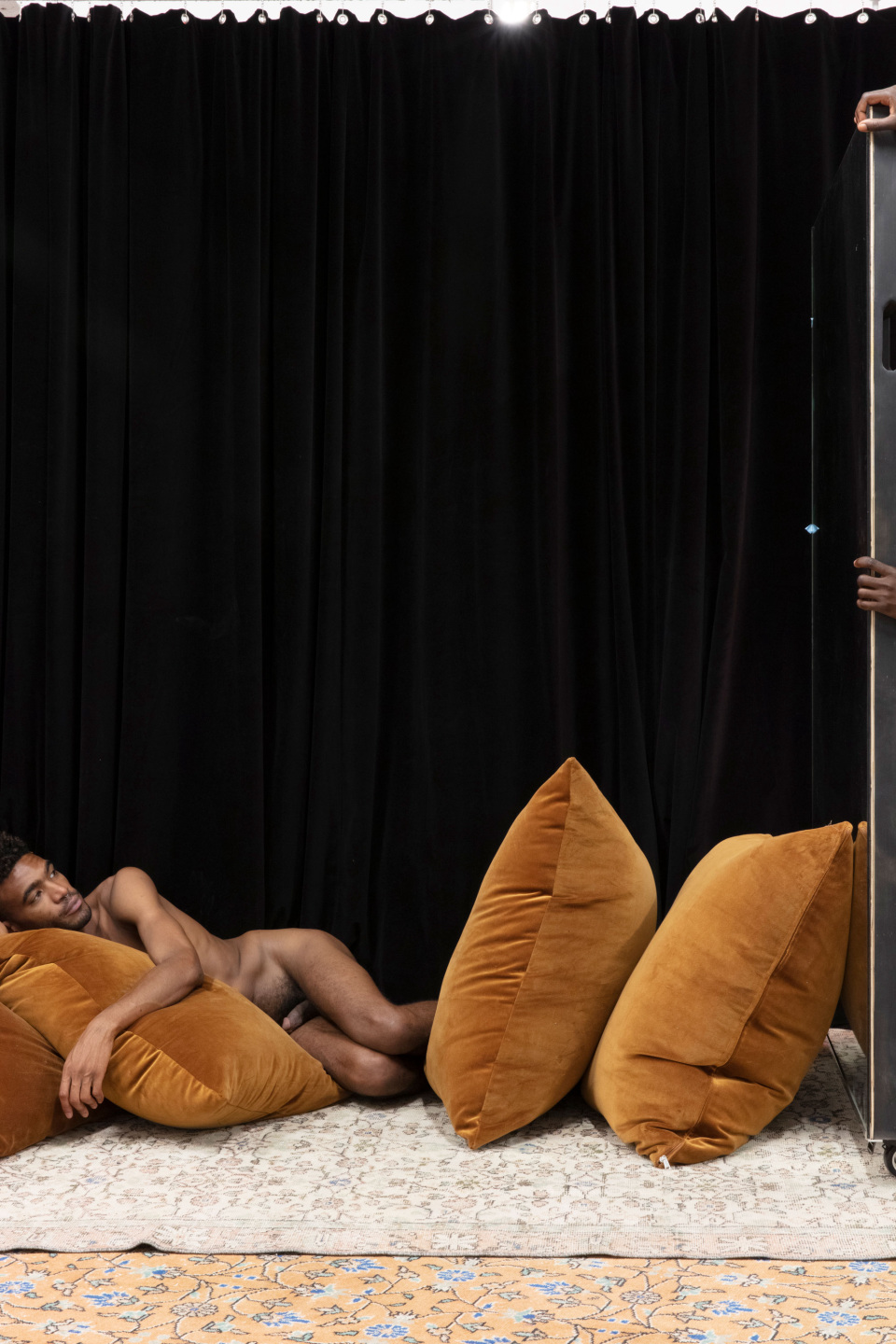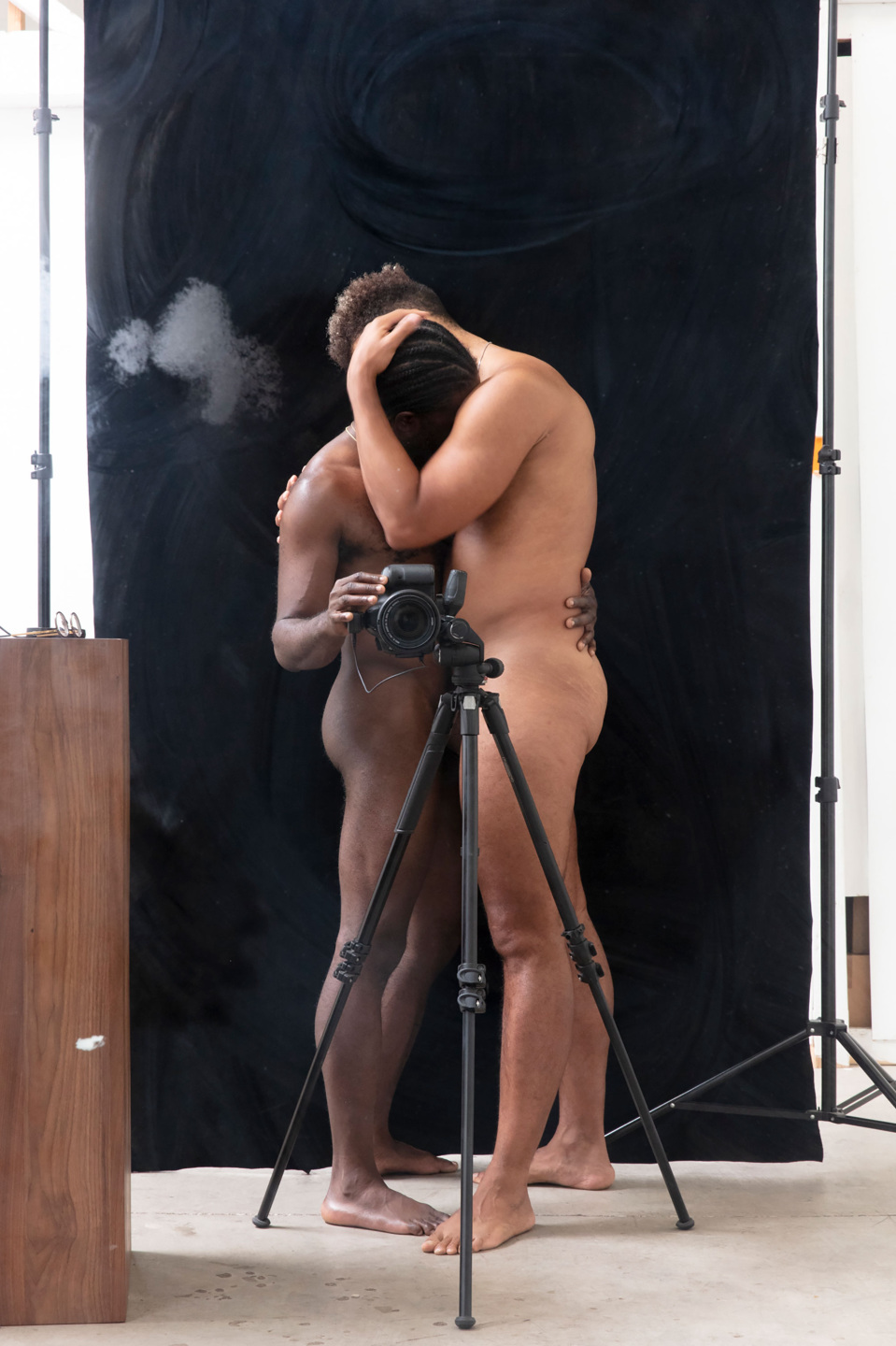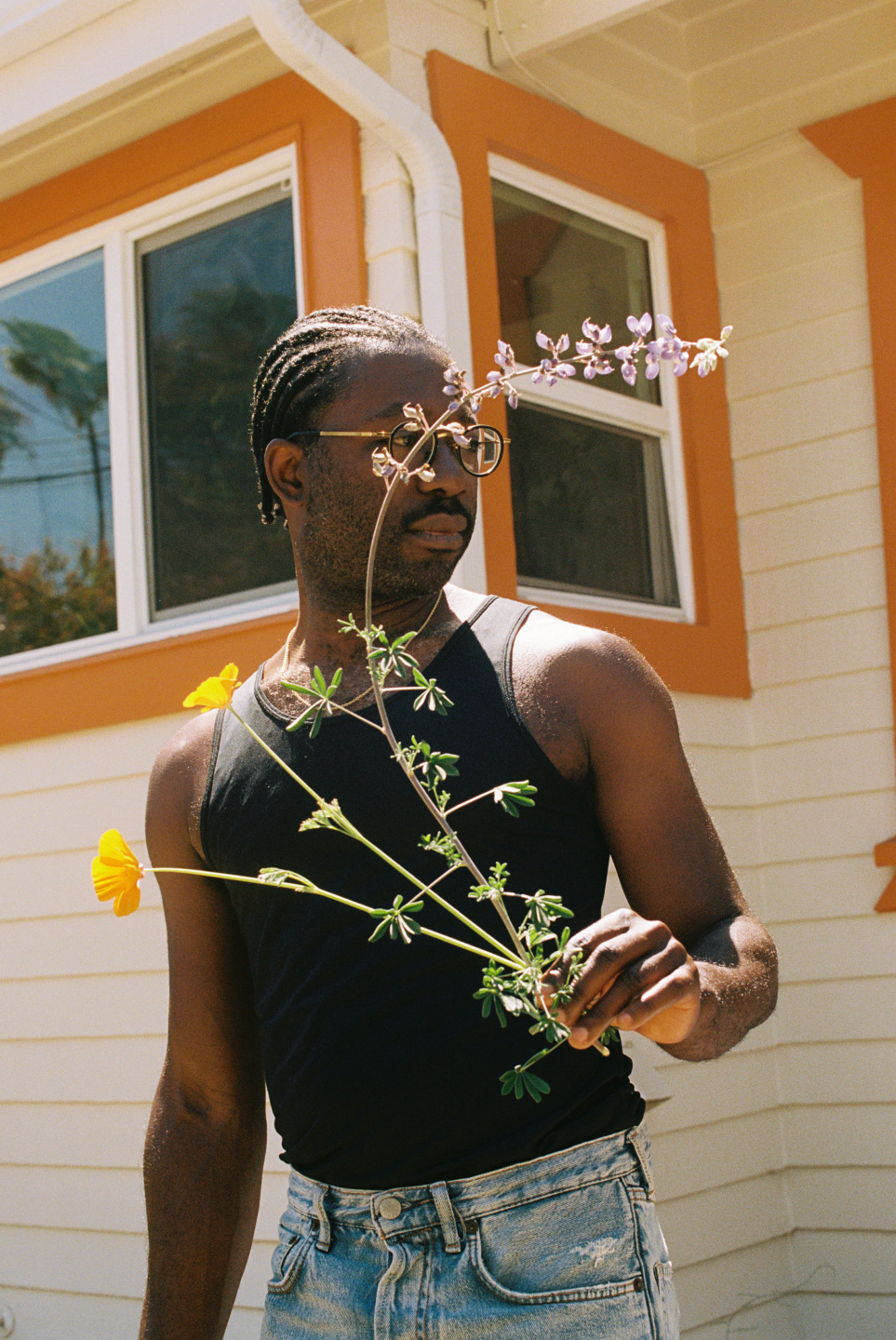In the 19th century, the earliest days of studio photography in the United States and Europe, portraits were taken by the light of day. Artist Paul Mpagi Sepuya’s forthcoming fall exhibition at Vielmetter Los Angeles, “Daylight Studio, Dark Room Studio,” is an homage to that era, as well as the traditions of homoerotic visual culture. In his second solo exhibition at the gallery, the photographer’s studio appears as “one particular space that functions in two different ways, according to time and illumination,” he says. In the white light of day, his subjects recline amid the objects of the 19th-century studio: the curtain, the rug, the pedestals and pillows, with the occasional pair of glasses or Birkenstocks shed and laid by the wayside. In the dark of night, conversely, his subjects become the blurs of bodies in motion captured under long exposure, bathed in the low, red light of the titular dark room space. The dark room is a double entendre, both the space where film and prints are developed, and the clandestine queer space where erotic collisions unfold.
Sepuya, 39, is best known for his portraits, and the tender intimacy with which he approaches his subjects. “They’re all friends,” he says; sometime between 2004 and 2005 he stopped shooting models and strangers in favor of various loved ones and lovers, former, current or future. They appear in his images often reflected in mirrors, sometimes nude, sometimes intertwined or locked in an embrace that evokes the figuration of Rodin. (Many reportedly resurface as profile pictures on dating apps.) They’re not posed, he says, but captured in improvisational states of play or flirtation. His presentation in the 2019 Whitney Biennial included images of, as well as taken by, writer and poet Ariel Goldberg, and fellow photographers Clifford Prince King and Giancarlo Montes Santangelo; in each of these images, they’re holding their own cameras. One photograph features the artist A.L. Steiner reclining on a wooden box topless, in a pair of black jeans, her hand adjusting the lens while Sepuya’s is pressing the shutter. The sense is that each subject has some agency in his or her own image.



Although themes of queerness and race are pervasive throughout his imagery, Sepuya has no intentions of making overt statements about body or identity. “The primary focus of the work is photography,” he’s often said, where his processes and tools, the frequent subjects of the images, are on full display. There is no Photoshop or digital manipulation, just physical elements in his studio that make one another visible: the velvet drop cloth, the mirror and the camera. The blackness of the drop cloth has a way of illuminating every fingerprint, streak and smudge on the mirror, rendering the mirror as part of the image. The mirror, in turn, reflects the camera, which is always present in Sepuya’s work. Even his titles, like Dark Room Studio (0X5A8413) or Dark Room Studio (0X5A8486), are file names assigned by the camera; the gaps in their numerical sequence are an indicator of how many outtakes took place in between.
As a teenager growing up in Southern California, Sepuya developed his love for photography collecting magazines, whether art, fashion or pornography. He moved to New York to study art at NYU, where he earned his BFA in 2004.

“New York was a place where I looked somehow successful, because when you’re really busy, no one knows how anyone’s actually doing,” Sepuya says. Early in his career, he had won critical acclaim for Shoot, a zine of nude portraiture, and published his first monograph, Beloved Object & Amorous Subject, Revisited, in 2007. Life in that city, however, proved to be debilitatingly expensive and, in 2014, he moved back West to enroll in UCLA’s MFA program. “It was a way to leave New York in a way that felt productive.” Sepuya is currently an associate professor at UC San Diego.
Sepuya’s work is now in the permanent collections of LACMA, MOCA Los Angeles, The Guggenheim, The Whitney, The Getty and more. His friends continue to be a source of inspiration in his practice, although inspiration isn’t quite the right word. “I feel like inspiration has a sense of detachment, as a distant viewer,” he says. “The thing that happens when you’re in a community of artists is that you become part of a conversation.”










 in your life?
in your life?

